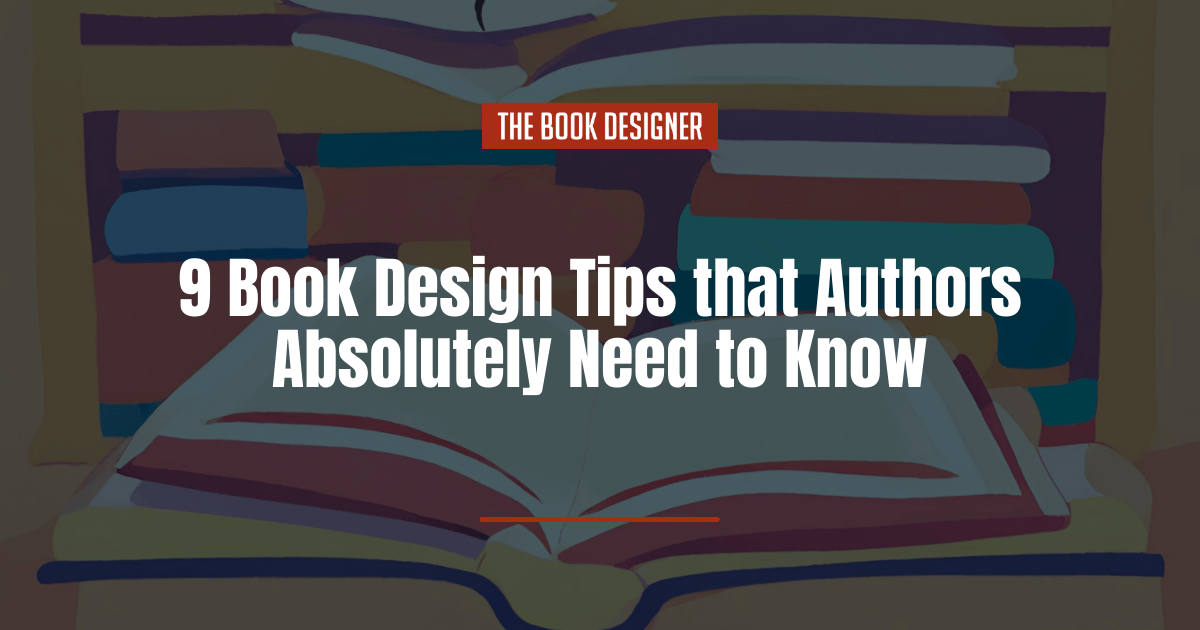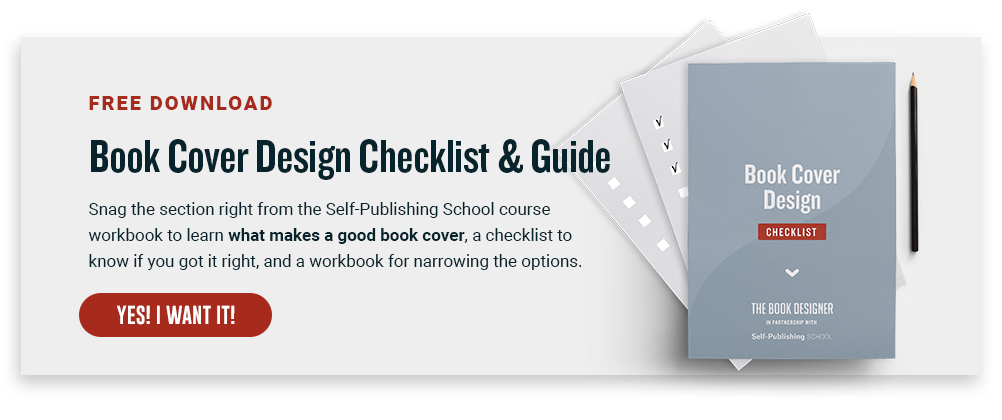If you’re not designing your own book, you might wonder why you need to know any book design tips. The truth of it is that even authors who outsource their book’s interior formatting will benefit from know what they can do to make their manuscript as easy to work with as possible.
On top of that, some books involve book designers right from their conception. These are books in which the way the content is presented is intrinsic to the purpose of the book. Think of manuals, travel books, or workbooks that accompany another text or a seminar. These are all examples of books where design will play an important role right from the beginning.
General nonfiction books are less likely to involve designers at the beginning. But that doesn’t mean authors shouldn’t start paying attention to how their books are put together. I think it’s fair to say that authors who are truly concerned about communicating their message effectively to their readers will pay attention to the design of their books.
Here’s what you need to know about book design:
Consistency is Important
Many design issues can wait until the manuscript is complete. The principle thing for authors to think about while writing their book is consistency. Books, by their nature, need to be consistent. Cues are sent to readers, often below their level of awareness, about how the book is organized and what to expect as they proceed through the book.
Here are some points to think about as your manuscript comes together. With all these suggestions, keep the reader uppermost in your mind. You’re writing to be read. Every other consideration ought to be secondary to getting the reader your information in the best possible way for them to consume it.
9 Book Design Tips You Should Know
When designing your own book interior, it’s important to know a few tips to make sure your book looks as professional as possible. But even if you’re handing your manuscript over to a professional book designer, following these guidelines will make their job easier and make you one of their favorite clients.
1. Book Division
Decide whether you’ll divide your book into chapters. Decide if you’ll use parts to organize the chapters into coherent sections, and if there’s a good reason to do this. For instance, if your book covers a wide range of time, it might make sense to impose a structure by dividing the main sections of the book into different parts, then, below those, to divide content into individual chapters.
Sections are very common in nonfiction books, especially those that cover a broad range of knowledge on a topic. From there, books are further divided into chapters and then subheadings within those chapters.
Also pay attention to consistency in your chapter opening pages and their formatting.
2. Non-text Elements
Be consistent in how you number chapters, parts, tables, figures, charts, and so on. A good method for numbering graphics is to use both the chapter number and sequential item number. For instance, in chapter 1, the graphics (or tables or figures) might be numbered Figure 1-1, Figure 1-2, and so on. In chapter 2, start the numbering over again, like this: Figure 2-1, Figure 2-2 and so on. This will make it immediately obvious to everyone working on the book which graphics go where. It also keeps your references simpler and easier to track.
3. Epigraphs
(Not epitaphs, which appear on tombstones!) These are the quotations authors like to put at the beginning of a book or on the chapter opening pages.
If you put these on one or two chapters, readers will expect to find them on every chapter. And if the first six epigraphs are one liners, do you really need that half-page quote you stuck into chapter 10? No, you don’t.
4. Bold Type
Don’t use bold within the text of your book. It won’t look good, it’s non-standard and it devalues the text around it. If you need to emphasize something, use italics or re-write so it has a natural emphasis from the structure of your prose. Bold is fine in heads and subheads.
5. Formatting
Don’t kill yourself formatting. Most of the formatting authors do in their manuscripts ends up on the layout designer’s floor, discarded as useless to the book construction process. And in some instances, a ton of formatting in your manuscript can actually slow down a book designer, as they need to undo it in order to have a clean copy of your manuscript to work from.
6. Styles
Learn to use styles instead of local formatting. Are you using Microsoft Word? Have you ever looked at the style menu or style palette? Putting in 20 minutes to learn to use styles (and it won’t take longer, I promise) will save you many hours of tedium in your writing life. And you want to spend your time writing, not formatting, don’t you?
Using styles also speeds things up once you’ve handed your manuscript over to a book designer. They’ll be able to easily map your styles into the final styles in the finished book design, rather than having to apply styles to each section manually.
7. Tabs
Eliminate the use of tabs within the text of your document. Tabs are unnecessary unless you’re creating tables or other non-text graphics. Your designer will only have to strip them out, and any tabs inadvertently left in the file could be problematic later in the design process.
Instead, set up automatic indents in your file so that the first line of each paragraph is automatically indented. This keeps the manuscript file nice and clean.
8. Spacing
Don’t double space between sentences. While this was standard in the days of the typewriter, it isn’t anymore. Double spaces have to be stripped out of the manuscript, either by you or your book designer. Pro tip: You can use the find and replace function in your word processor to find double spaces and replace them with single spaces.
Also, be aware of spacing between lines in your text. Too much or too little line spacing makes your writing harder to read and looks unprofessional.
9. Backups
Make a backup. Make another one, and email it to yourself. This is the fastest and safest off-site backup you can get. And it won’t cost you anything. The file, as an attachment to your email will sit on your email server until you decide to delete it (check your email client settings to see if messages are automatically deleted after some specific amount of time has elapsed, just to be safe).
Even if you’re using a cloud-based word processing software, be sure to download a copy on a regular basis to your local computer and/or email the file to yourself as an attachment. Many cloud-based apps have the functionality to do that in a single step (for example, in Google Docs you can share as a PDF attachment via email without having to download anything in between).
A lot of these book design tips are aimed at manuscripts you are preparing to send to a book designer or layout artist. While you’re working on your book you probably will do lots of formatting because it simply makes the document easier to understand and more visually enjoyable to work on.
Work on a copy of your file instead. Designate it as a backup because you will delete it when you change the master file, then create another copy to work on. You don’t want to end up with more than one version of your file, if both have unsynchronized changes.
Paying a little attention to how your book is going to look and how it will be constructed will pay off when you go into production. Your book will get to press more quickly, it will be more consistent, and it will be better at communicating your content.




